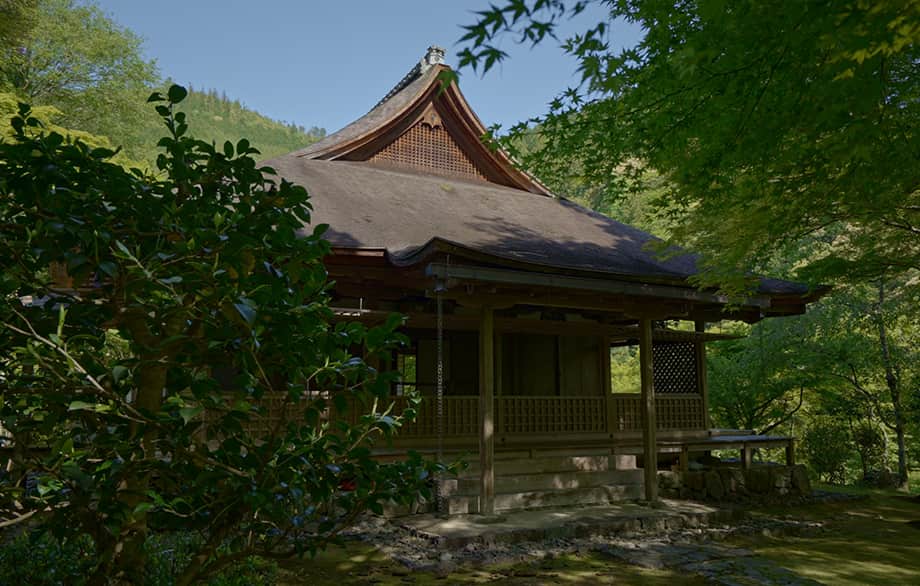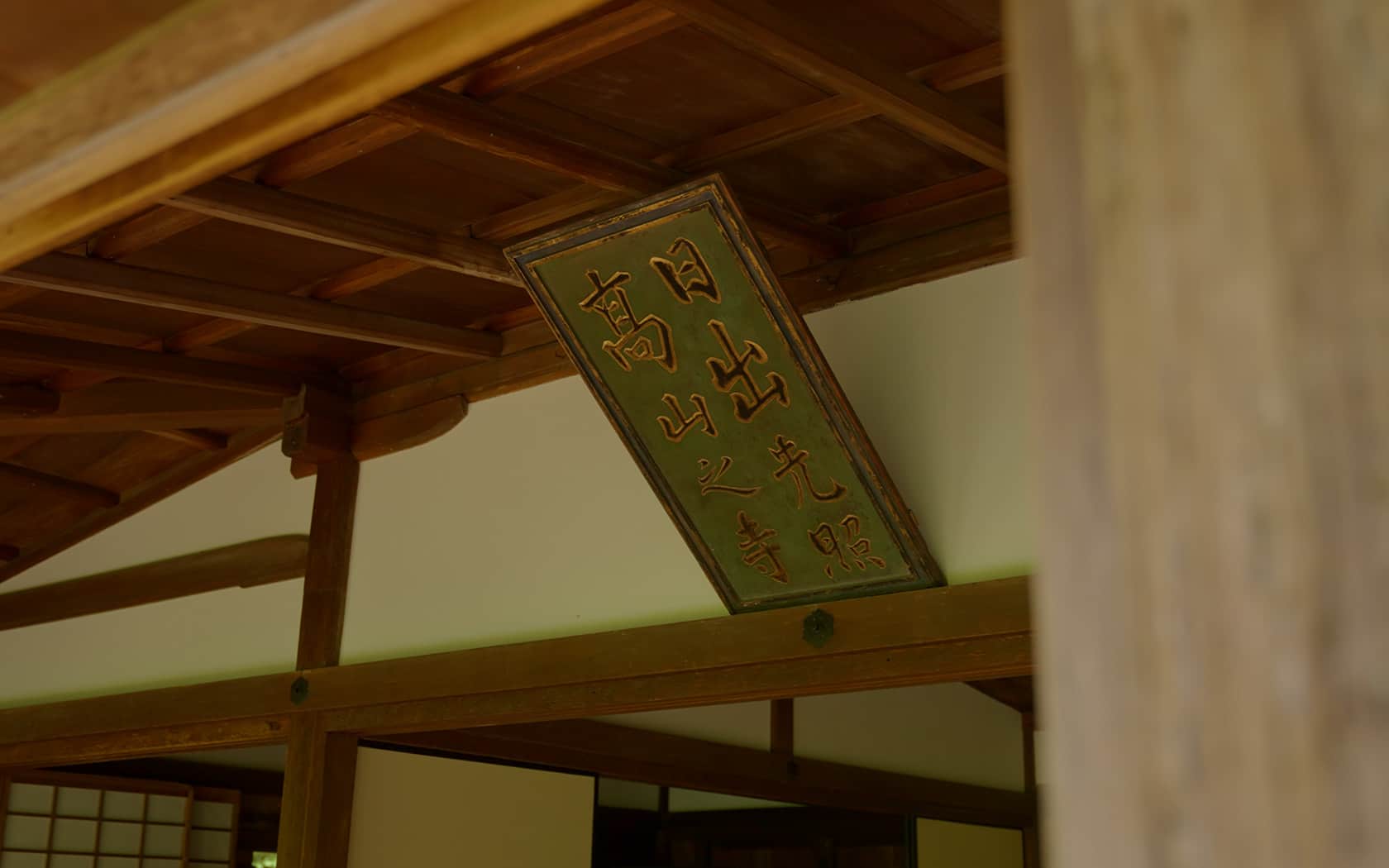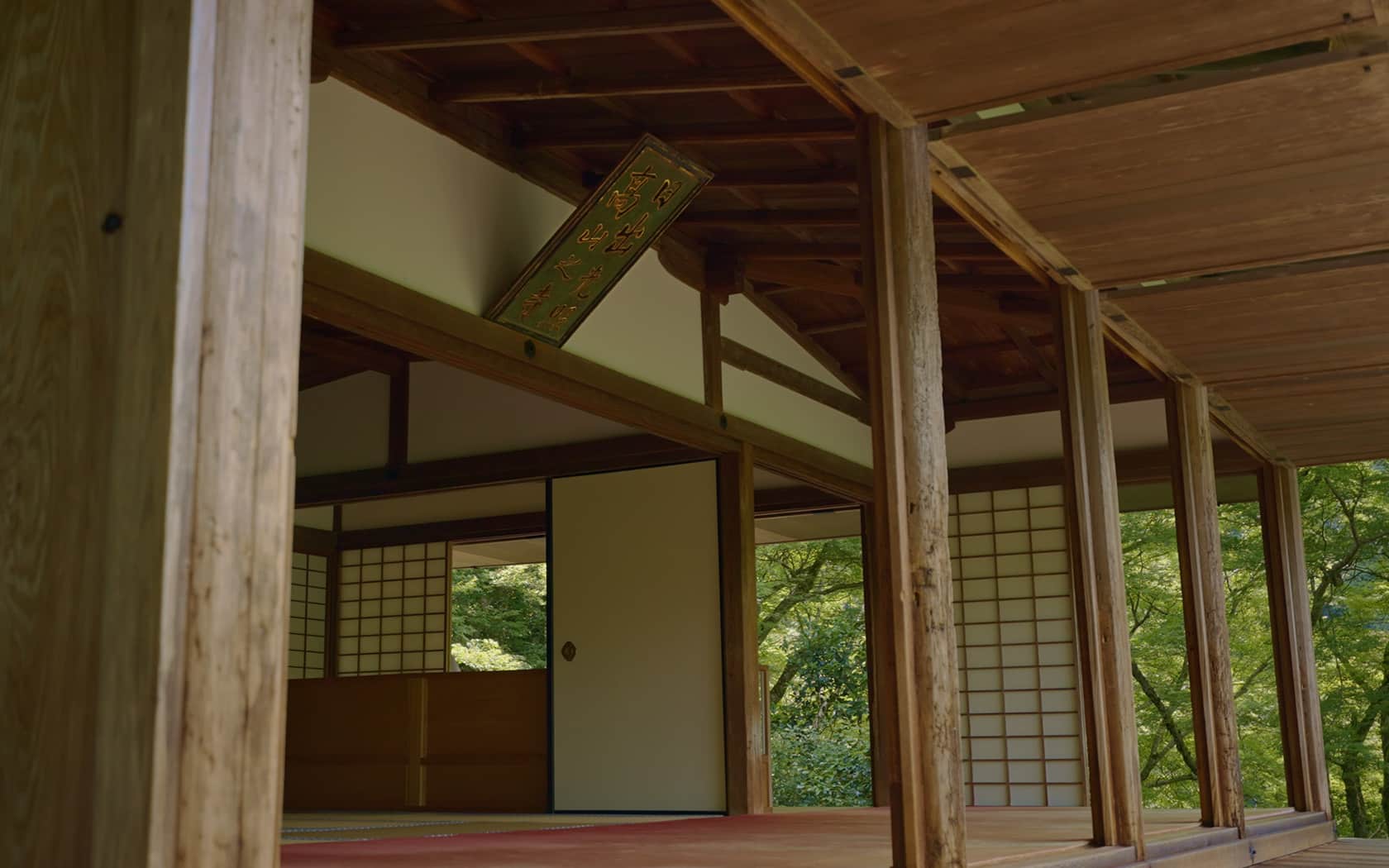Kosanji Temple was founded in 1206 by order of the emperor. Emperor Go-Toba (1180–1239) made the land available for this purpose with a decree that he himself wrote. The decree included lines from the Flower Garland: “When the sun rises, that which is first illuminated is the highest of mountains.” Kosanji means “high-mountain temple” and its name comes from this scripture, which is a cornerstone of Kegon (Chinese: Huayan; Flower Garland) Buddhism. The decree now hangs in the southern part of Sekisuiin.

Sekisuiin
Emperor Go-Toba
Born in 1180, during the Jisho era, he ruled as Emperor during the early Kamakura period. The fourth son of Emperor Takakura, he abdicated in 1198 and governed through cloistered rule. Excelling in the art of waka poetry, he commissioned the Shin Kokin Wakashu poetry anthology. In 1221, he issued an imperial edict to track down and assassinate Hojo Yoshitoki but failed and was exiled to the Oki Islands (an incident known as the Jokyu War or Jokyu Rebellion). He passed away there in 1239.
Imperial Prayer
A decree for prayer. The emperor's prayer.
Kegon (Chinese: Huayan; Flower Garland) Buddhism
A sect based on Kegon Buddhism (Avatamsaka Sutra), established during China’s Tang Dynasty. Dosen (Daoxuan), a Tang priest, is said to have introduced the sect to Japan in 736. Todaiji is the main temple today.





